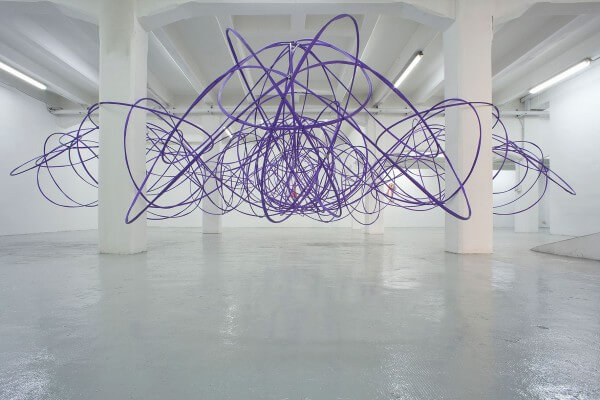Awaiting Venice Biennale 2024: Michelangelo Penso
Michelangelo Penso
Tell us a little about your background and genesis as an artist..
My artistic journey started with my studies at the Academy of Fine Arts here in Venice, participating in Emilio Vedova’s painting course. I also had the fortune to come into contact with the Bevilacqua La Masa Foundation and to have a space at Palazzo Carminati, and here I made my first contacts with galleries. Over the course of the years I moved away from Venice and arrived at Porto Marghera, the industrial port of Venice, in search of new spaces and larger environments. My work continued to grow and I felt the need to have a space that could accommodate my ideas that were taking shape. I arrived in the 90s here in Porto Marghera and at that time there were not many artists, in fact, maybe I was one of the few, because it was still quite a challenging environment. Then over the years, it has become more attractive and fortunately other artists have arrived. There are many more studios and the environment here has become even more vibrant and interesting.

Your work is closely tied to scientific research, can you expand on this by talking us through one of the pieces in your studio?
This work is called Optogenetic and in fact, it is a series of works inspired by optogenetics – linked to brain functions. This structure defines spaces and volumes that are empty. Because fundamentally what you see, what you notice more, is the emptiness inside this sculpture, it is almost like a large three-dimensional drawing, lines in space, which determine the form of this idea of optogenetics. Incidentally, all my works unfold and become real from inspiration linked to moments of scientific research which, among other things, represent nanometric and therefore invisible elements. What fascinates me about my work is that it has led me to explore these scientific fields. Because all these small discoveries also affect and influence important issues from a political, sociological, and also economic point of view in our society. There is also a large component of interactivity in my works, a kind of interactivity between the work and the viewer, because they are almost habitable installations because you can enter, you can enter without any problems. You can touch them because they are made of industrial materials that have no issues, they are almost indestructible. These, for example, are polyester straps that can hold upto 1500 kilograms per square centimetre because they are used to secure loads inside ships, in their holds. And so, obviously, here in Porto Marghera, with the ships here, I can find these materials. The involvement, the habitability of the work, the enjoyment through the senses and the presence of people in the space, and therefore a dialogue between the actual space of museums or galleries and the work itself are the elements that underpin my research.
What about your relationship to the city of Venice today?
Venice is my city. I was born in Venice and I know the environments of Venice, they are very familiar to me. Working here in Porto Marghera, I find it to be an extension of the city. It’s fascinating for me, as I said, for all the possible stimuli for my work. But it is always fortunate to have Venice nearby, Venice attracts many collectors or art lovers to the art world, people who want to experience the city in a specific way. We have museums of ancient, modern and contemporary art, obviously, great foundations such as the Guggenheim, Punta della Dogana, and above all the Biennale Foundation. The Biennale is a continuous opportunity for us artists who live in this territory, for stimuli and for contact with other artists who come to visit our city. So the importance of this territory, at least for me, is precisely this, and I was fortunate enough to start benefitting from this from the very start.




